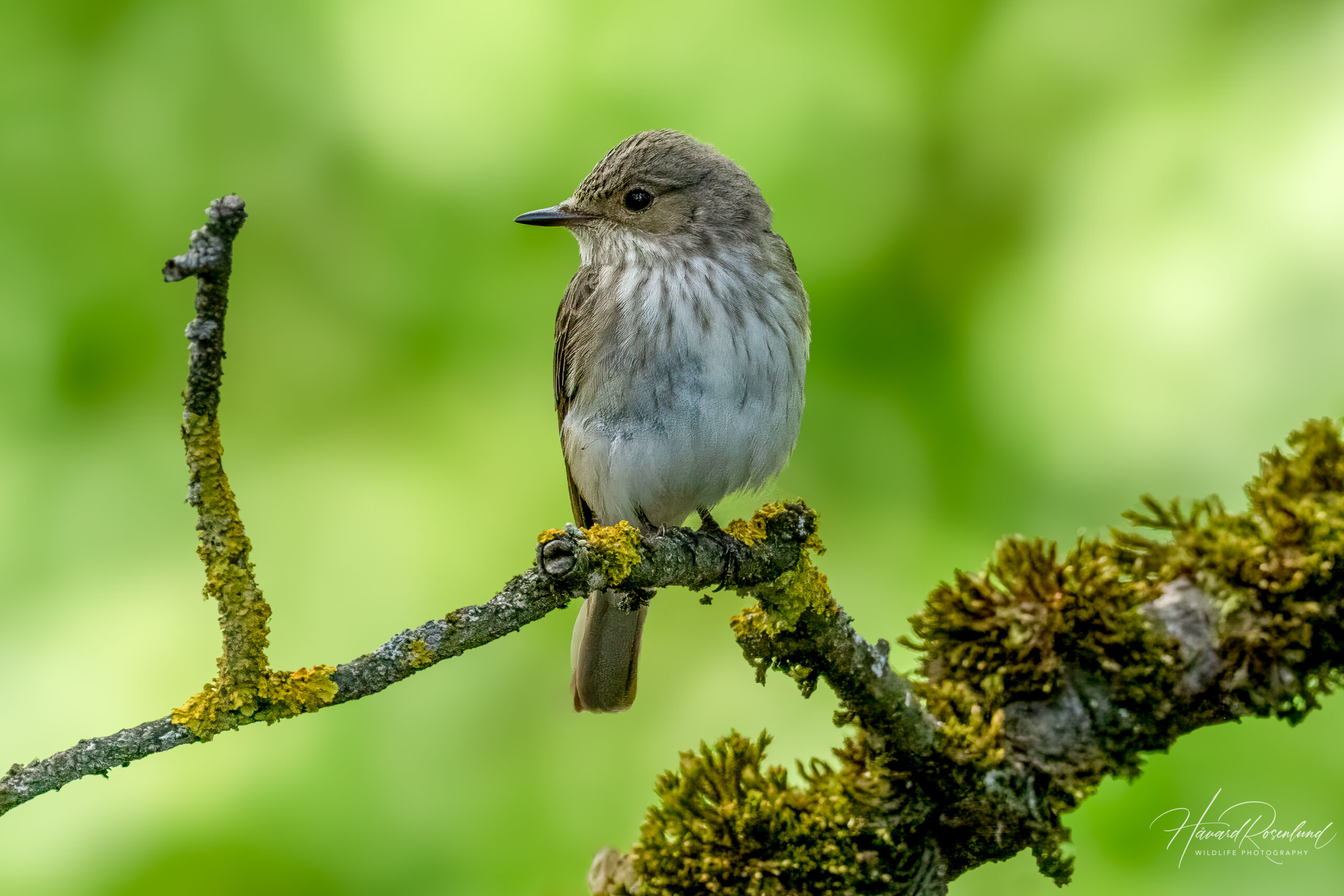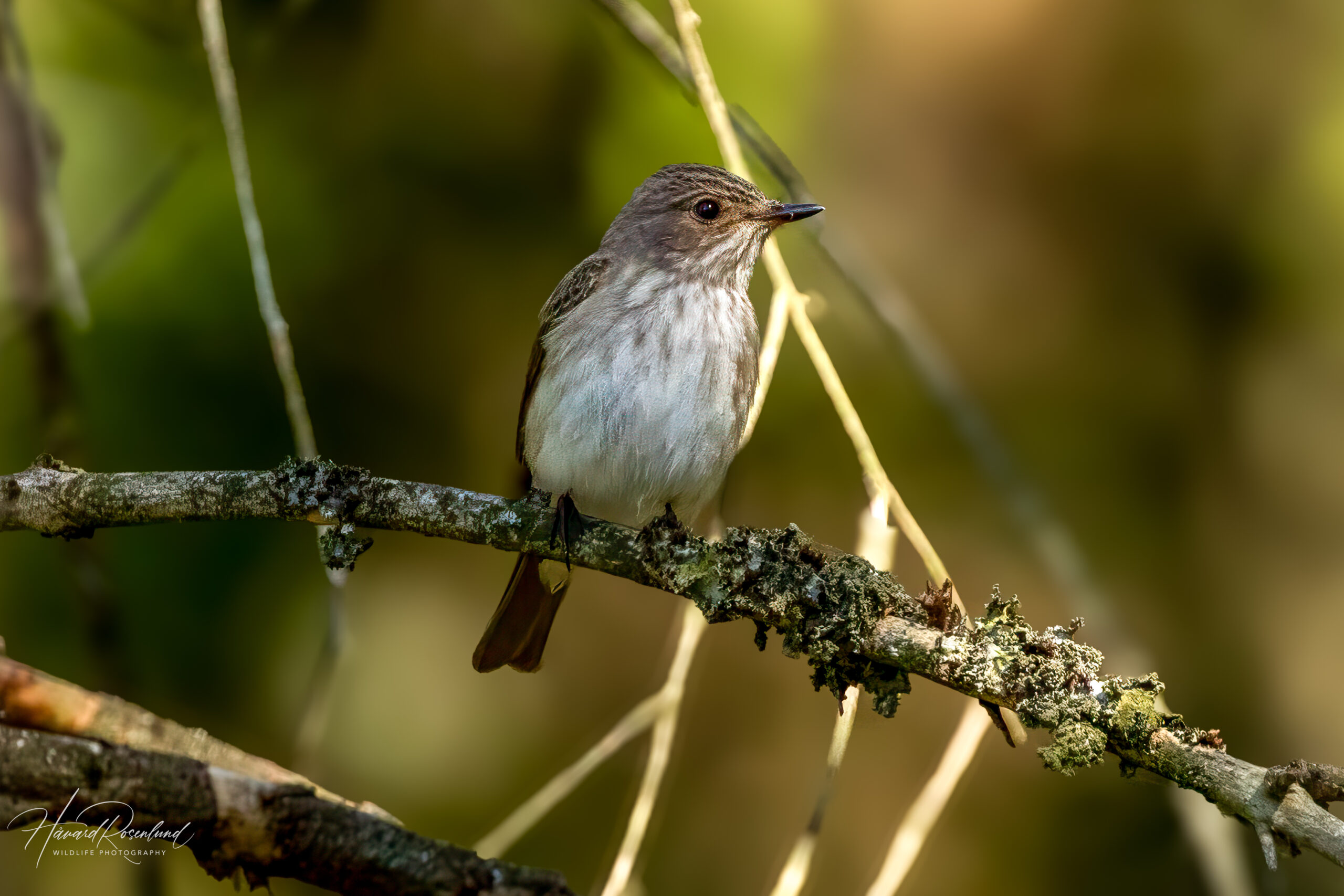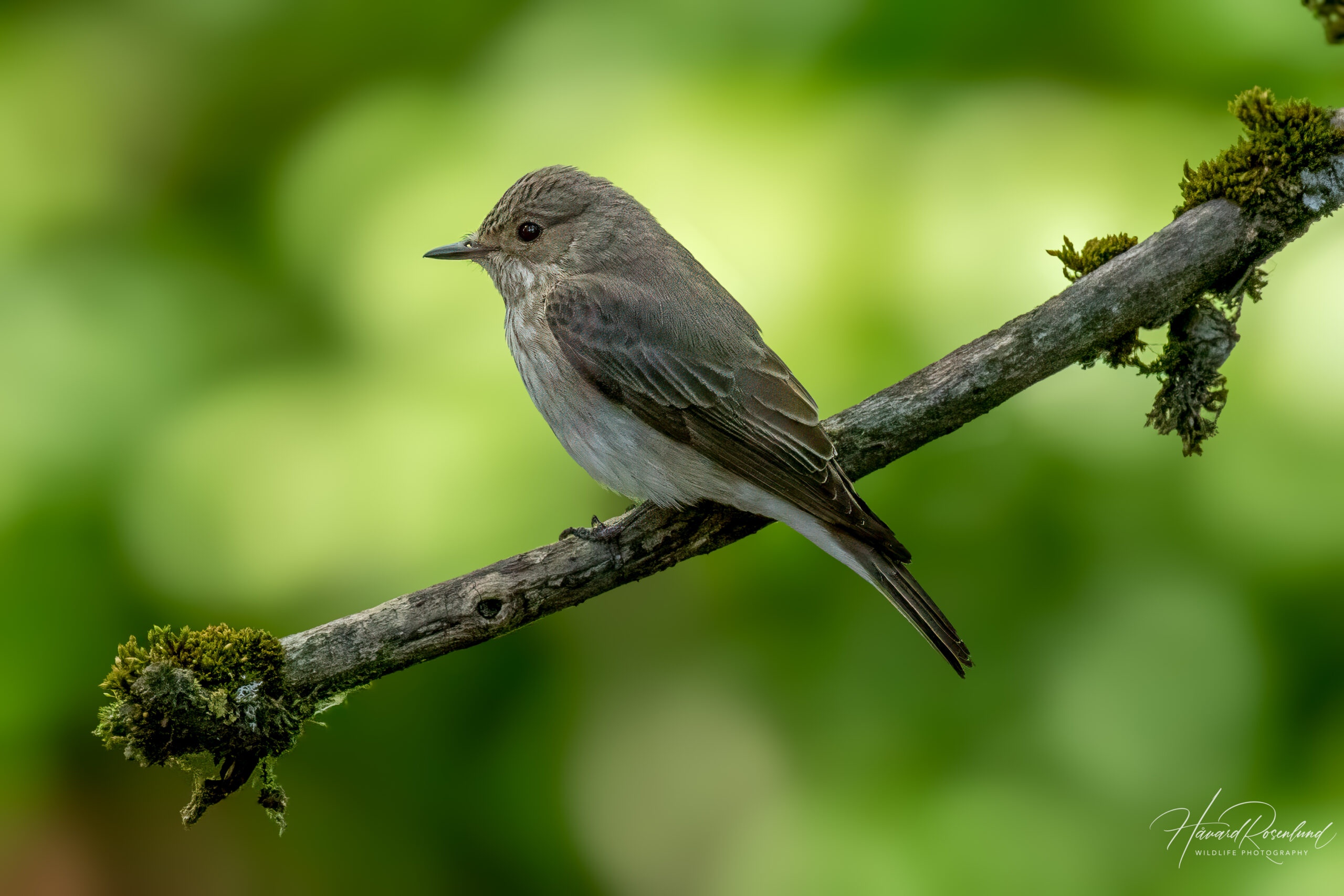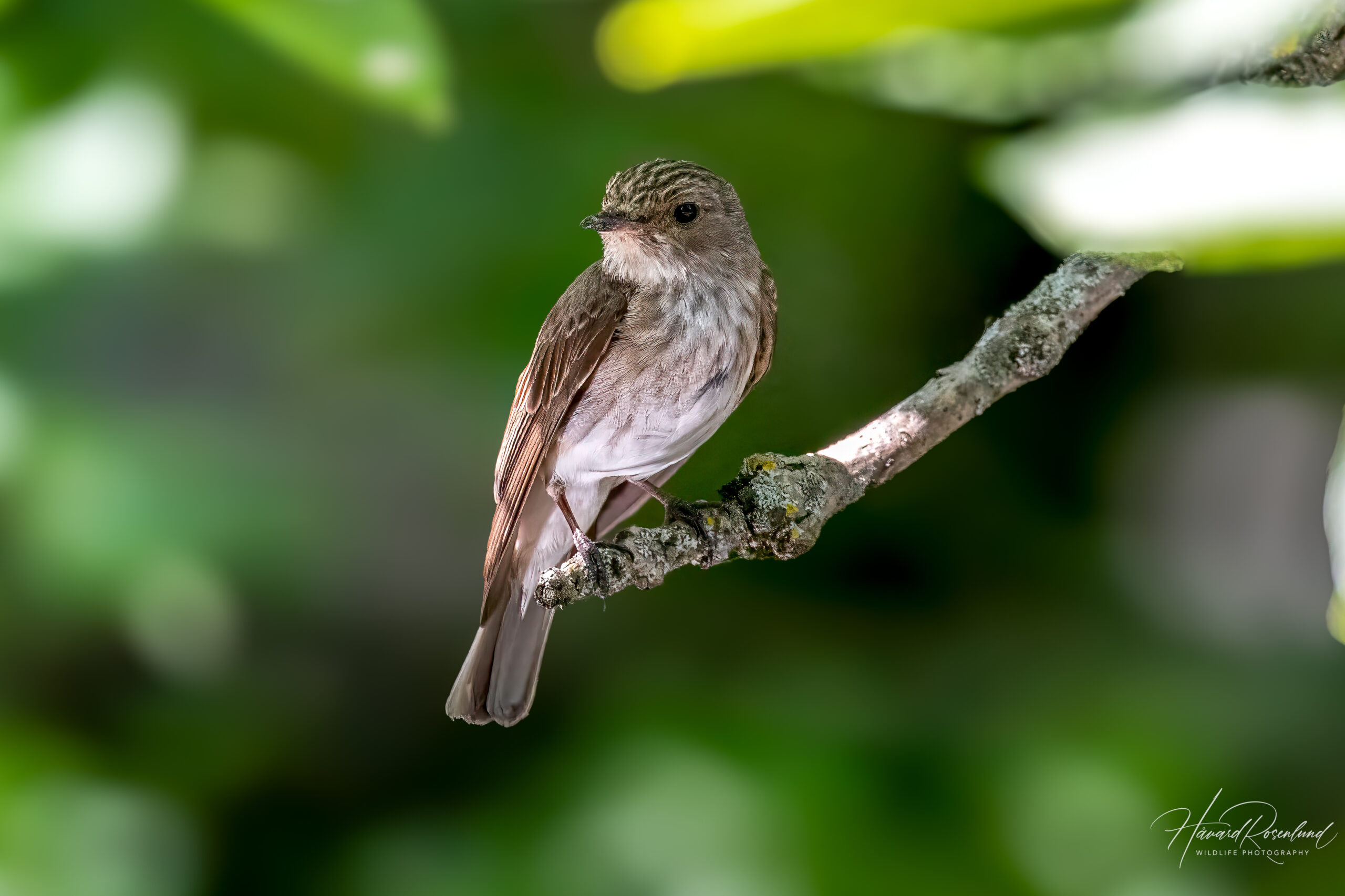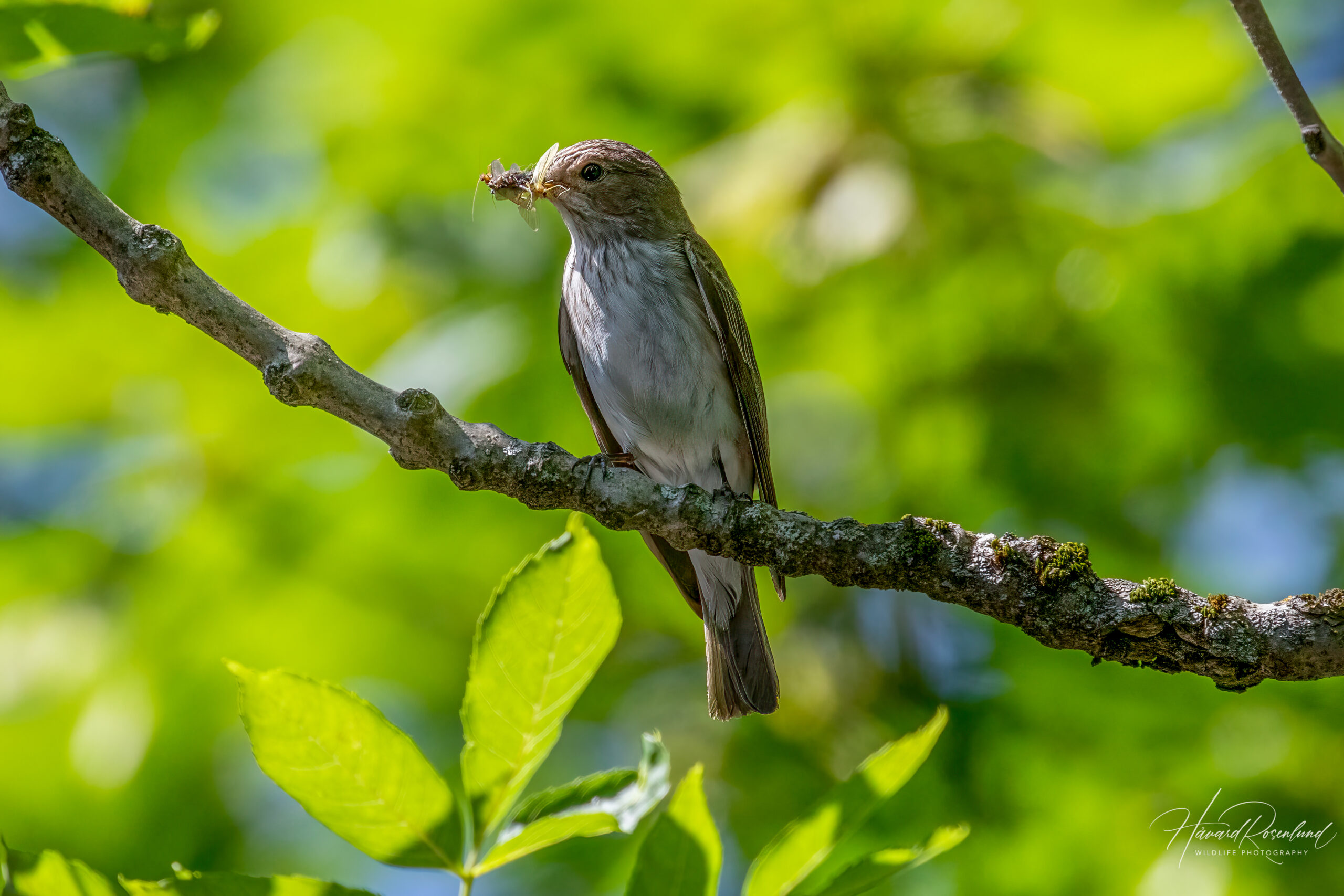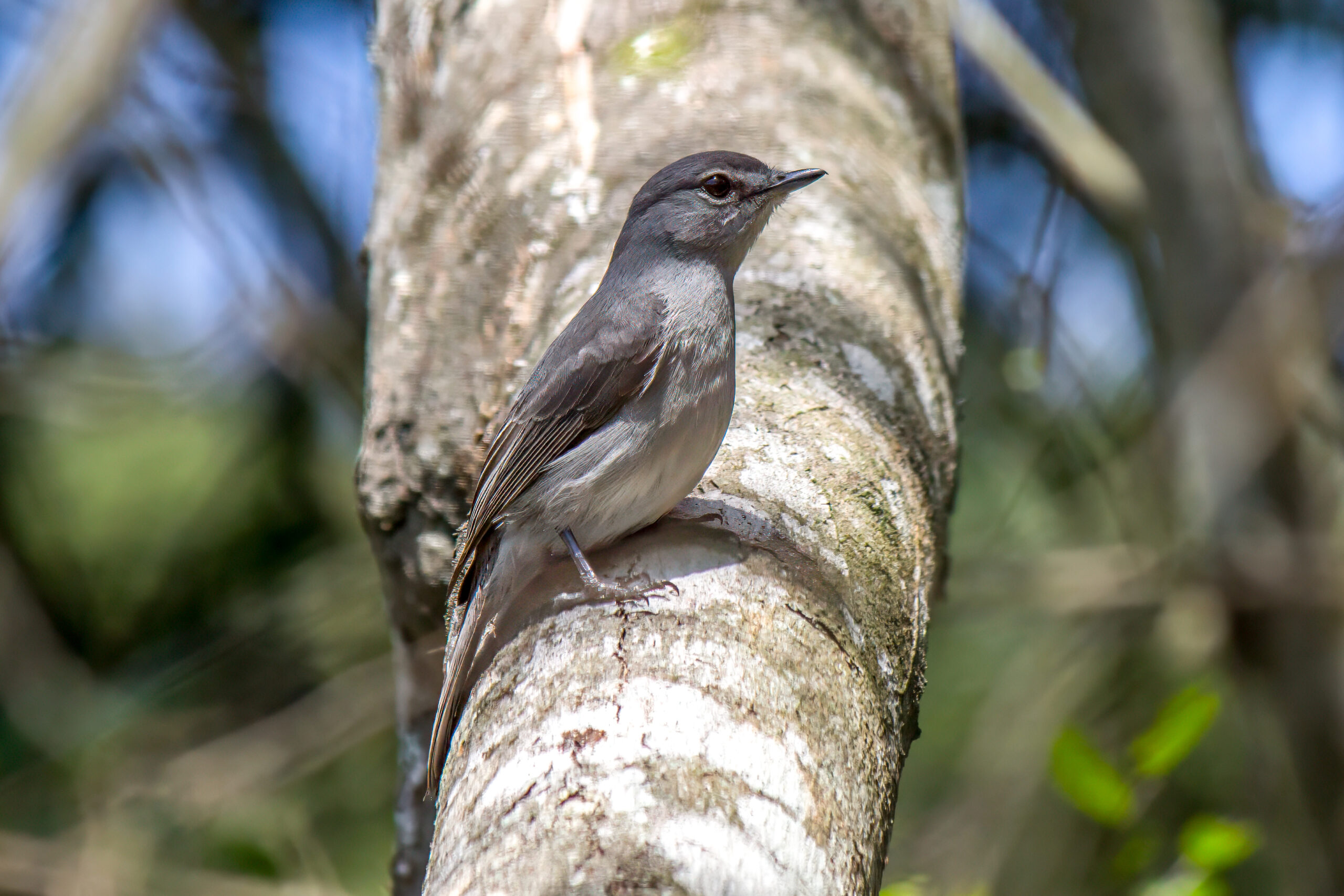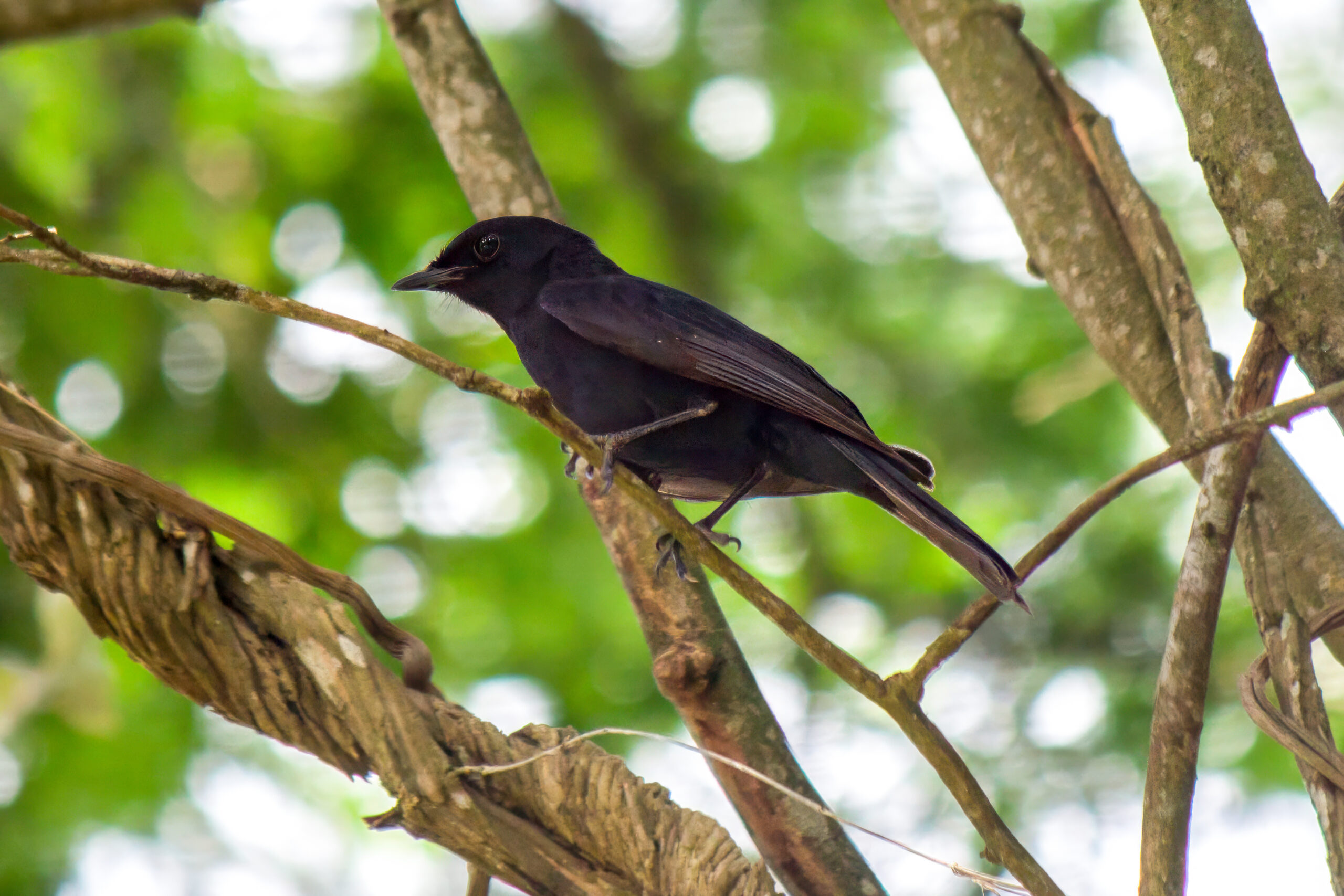Spotted Flycatcher
(Muscicapa striata)
Description
The spotted flycatcher (Muscicapa striata) is a small passerine bird, with an unassuming appearance. Adult spotted flycatchers reach a length of about 13-14.5 cm (5.1-5.7 inches), with a wingspan of 24-27 cm (9.4-10.6 inches). They have a greyish-brown back and whitish underparts, with a distinct pattern of dark spots across the breast. They also have subtle streaks on the head. Their relatively plain appearance is complemented by a broad, flat bill adapted for catching insects mid-air. The streaked head and spotted chest are distinct features for this species, and separates it from other flycatchers.
Diet & habitat
Spotted flycatchers are predominantly insectivorous, feeding on a wide variety of flying insects, including flies, beetles, and moths. They are often seen perched in open spots from where they launch to catch their prey in mid-air, using a technique known as “sallying.” Their habitat encompasses open woodlands, parks, and gardens across Europe, Asia, and Africa, where they prefer areas with scattered trees and shrubs, offering ample perching and foraging opportunities.
Migration
These birds are migratory, spending their breeding season across Europe and western Asia and wintering in sub-Saharan Africa. The migration begins in late August through September, with the return journey commencing in March and April. Because of their long migration routes, they are one of the last summer migrants to arrive at their breeding grounds and one of the first to leave, making the most of the peak insect availability.
Nesting
The breeding season starts in late May to June, depending on location. A pair (or sometimes the female alone) constructs a simple nest made of twigs, lined with finer materials. It is placed on a tree branch or a ledge. A single clutch typically consists of 4-6 eggs, which are incubated primarily by the female for about two weeks. The fledglings leave the nest around two weeks after hatching but remain dependent on their parents for a short period thereafter. Spotted flycatchers may raise one or two broods per season.
Status
The spotted flycatcher is classified as least concern on the IUCN Red List, although its population has seen a decline in parts of its range due to habitat loss and changes in insect abundance. Conservation efforts focus on preserving their natural habitats and mitigating impacts of agricultural practices.




